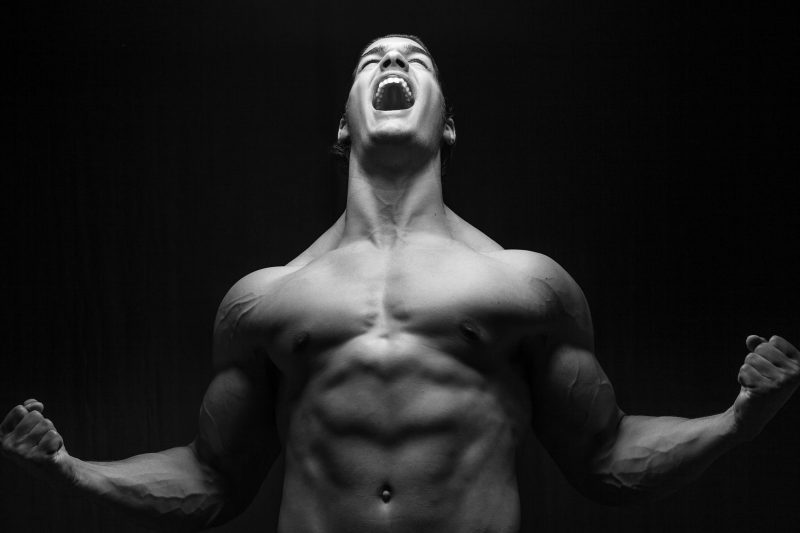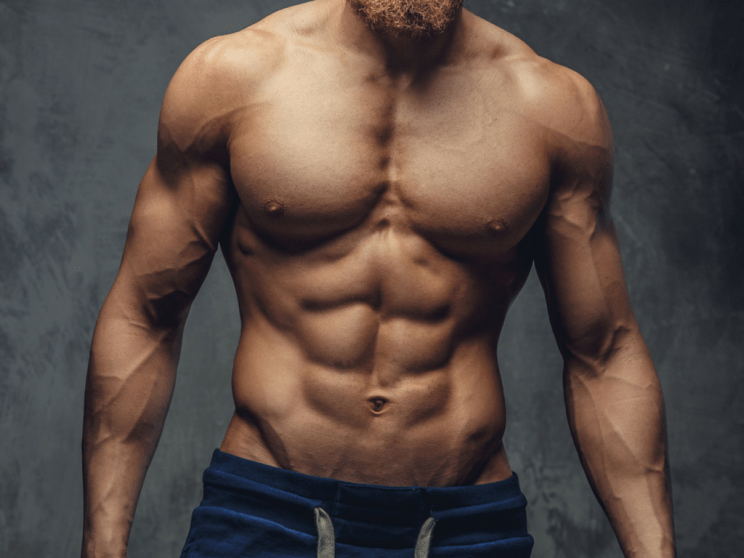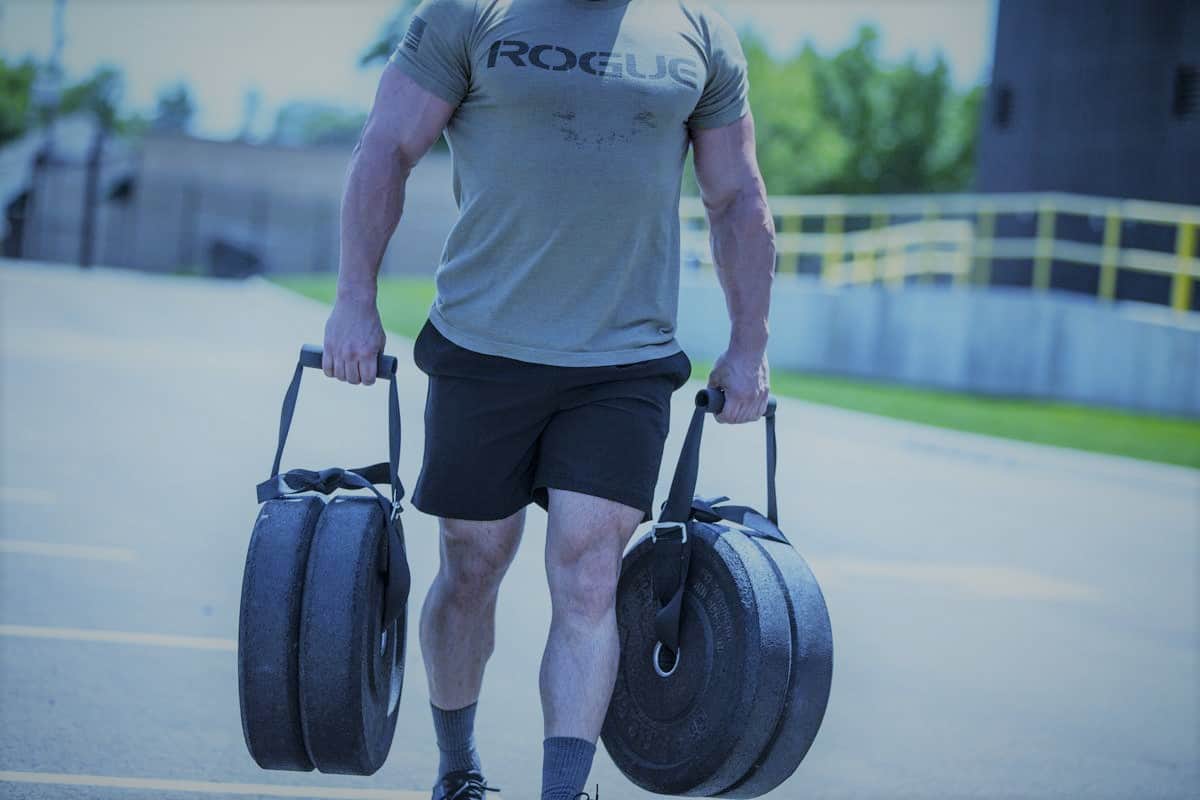The powerlifting weight class you should be in corresponds to the heaviest you can be while being as lean as you can comfortably get. Most of the time, staying above 12% and under 15% body fat will do the trick.
There are many factors that go into how strong you are, including technique, leverages, muscle insertions, muscle fiber composition, muscle size, and the factors surrounding your PR performance. Of these, the three factors you can reasonably affect are your technique, PR performance, and muscle size. Because powerlifting is quite simple in nature, you will likely reach about 90% efficiency within just a few years of consistent training (versus more technique-dependent sports, where it takes much longer to reach high efficiency). That means you might be missing your last 10% after a few years of training, but you will have made most of your technique progress rather quickly.
PR performance is also something that comes with practice. You’ll learn what works for you best – how best to warm up, what pre-workouts you like, whether you prefer getting pumped with music, whether you like an audience when you lift or not, and so on.
But the one and only factor that will continue to affect how much you lift for years and years is the size of your muscles. The bigger the cross-section of a muscle, the more powerfully it can contract. Powerlifters are stronger than bodybuilders despite having smaller muscles because their training is more strength-specific (so they’re neutrally adapted to bigger intensities in their training), but the most jacked powerlifter is often also the strongest person in his or her powerlifting weight class, with rare exceptions (owed to great leverages and insertions, most of the time). This leads us to a natural conclusion: if you’re interested in being as strong as you can possibly be, you also need to invest some time into getting as muscular as you can possibly be.
Be the Most Jacked You Can Be
But just how jacked can you get? Unfortunately, there’s no easy way to determine this. There are handy little calculators that try and give a ballpark estimate of how much muscle mass someone can have on average based on their height, and some even go so far as to utilize wrist and ankle measurements to determine the size of your general frame (which is typically the limiter when discussing drug-free muscularity), but the only way to really tell how muscular you can get is by training for size, for years.
That doesn’t mean you should abandon training for strength. Instead of focusing on bodybuilding, or lifting purely for bigger PRs, consider a balanced “powerbuilding” approach where you spend most of the year gaining size, and a few months consolidating that new physical progress into progress on the bar, preferably for an upcoming meet (you don’t have to be in the best shape of your life to start competing in powerlifting, just start if you want to).
Generally speaking, it’s assumed that the human limit of muscle mass is determined by bone mass, at a ratio of 5:1. That means you can have about 5 times as much muscle in mass as you have bone. Bigger skeletons with thicker bones have the potential for more muscle – but that does not mean they will reach that potential. There are other factors at play here as well, including genetically predetermined factors like your natural hormone levels.
For the average man, Berkhan’s formula will give you a good idea of how much you should weigh while at 10% body fat if your aim is to get reasonably jacked. Take your height in centimeters and subtract 100. If you’re 177cm tall, like me, you’d need to weigh 77kg at 5-6% body fat to be relatively close to your natural drug-free limit. Some people won’t get that heavy, even with years of training, while others have the genes to surpass that. And, of course, if you’re on vitamin S, you’ll be able to pack on far more muscle in general.
Other useful calculators include this one that tries to measure your estimated maximum potential fat-free mass based on your height and the circumference of your ankles and wrists. This will give you a general estimate based on your estimated bone mass.
There are useful tables online that try to estimate what your powerlifting weight class should be at a given height if you’re aiming to hit a high Wilks, based on the heights and weights of previous record holders and Elite-level powerlifters. In general, the strongest guys in their respective weight classes were jacked, short, and lean. The shorter, more jacked, and leaner you are, the better.
| Height (+/-2-3 cm) | Weight |
| 145 cm | 52 kg |
| 149 cm | 56 kg |
| 155 cm | 60 kg |
| 160 cm | 67.5 kg |
| 164 cm | 75 kg |
| 169 cm | 82.5 kg |
| 171 cm | 90 kg |
| 174.5 cm | 100 kg |
| 177.5 cm | 110 kg |
| 186.5 cm+ | 110 kg+ |
However, there have been outliers that are far too light and far too tall to compare to the elites, who have still put up crazy numbers. Sometimes, you’re born with the right toolkit to lift big, even when you’re not extremely jacked. Don’t assume you’re the exception until you prove you are, though. Just as the average guy will find Berkhan’s formula useful for determining a pretty jacked weight, the above will be generally useful. Also, these numbers assume that you’re closer to lean (around or under 15%, ideally) rather than fat.
Thankfully, you don’t have to aspire to be a world record-breaking powerlifter. You can be jacked, tall, and really strong – and be happy with that. If all you’re after is achieving your own maximum potential (which is what you should ideally be after), then remember this: get a muscular as you can, while staying comfortably lean.
Size Isn’t Everything
The biggest guy in the room won’t always be the strongest, even when they’re training to lift heavy. Some people are blessed to lift more weight than you do, and it’ll show fairly early on in their training.
The human body isn’t a perfectly replicated template, and some people have bodies that are better suited towards maximum force production, with more ideal moment arms owed to better insertions, thus requiring less overall force to replicate the same movement. Leverages are another thing, although they’ll typically even out (i.e. someone with shorter arms won’t deadlift as much as someone with longer arms, but they will bench press much more).
Regardless of whether you’re a talented lifter or just love this sport despite your own disadvantages in it, we should all aim to reach out own maximum potential, whether that’s in the realm of Elite powerlifting or not. Don’t fuss to hard about your powerlifting weight class, especially when you’re starting out.




